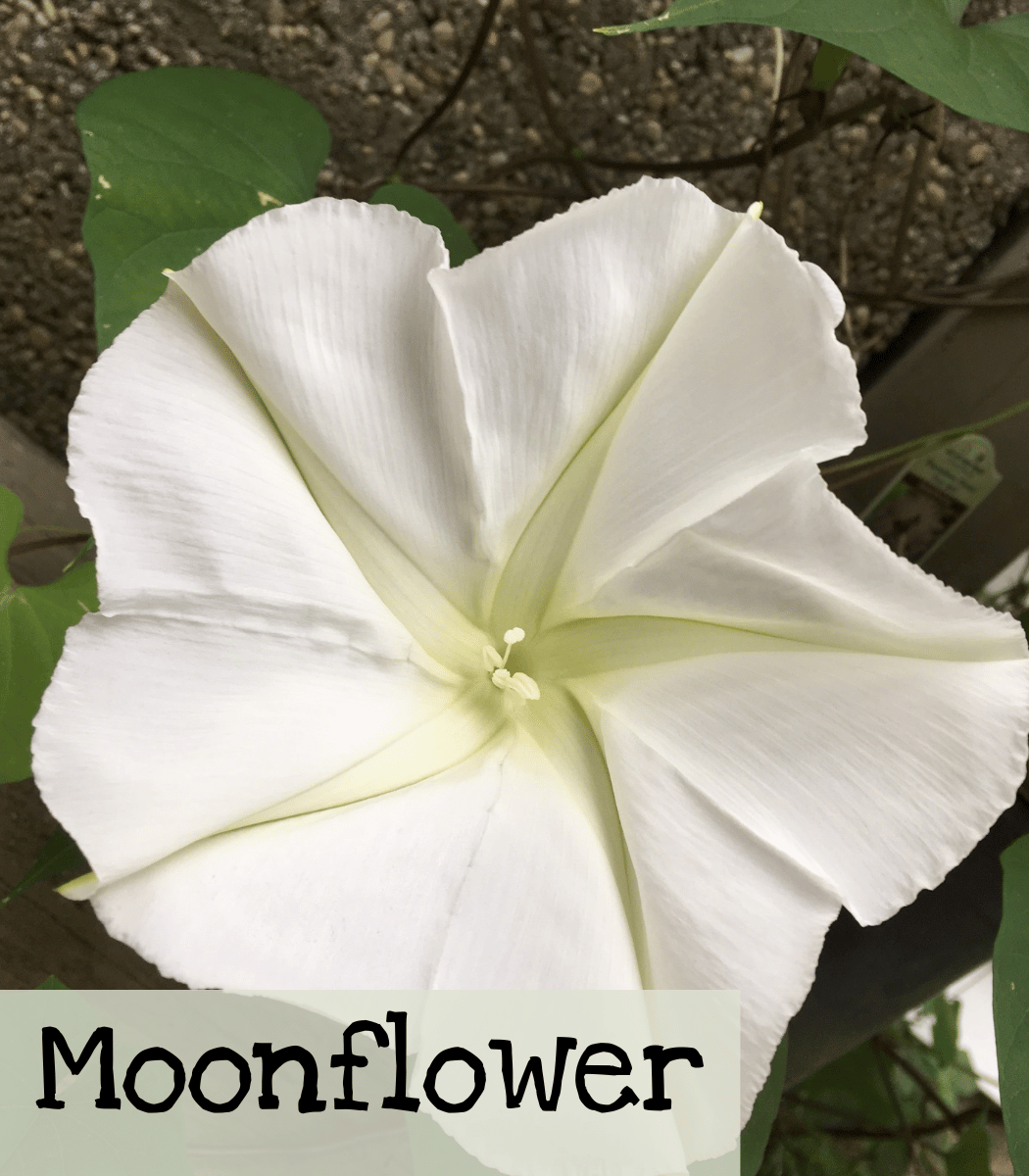
Moonflower
Some varieties can grow 20 feet long. These impressive night-bloom moonflowers are a good nectar source for night-feeding insects.
|
Giant White |
|
Ipomoea alba |
|
Intermediate |
|
Intermediate |
|
2 years if properly stored |
|
Annual |
|
7-14 days |
|
Scarify and soak overnight |
|
1/2 inch |
|
vine |
|
Full sun |
|
Summer at night |
|
May |
|
No |

Growing Tips


When to Start
Direct Sow: 2 weeks after the last frost. (Mid-May for GA)
How to Start
Moonflower has a hard seed coat. Scarify the seeds by nicking or cutting the seed with a nail file. Then soak them overnight to aid germination. (This is the only reason moonflower is classified as intermediate.)
Direct sow, as moonflower doesn’t transplant well. Sow to a depth ½ inch deep and thin to 8 – 12 inches.
Care
Sow into full sun, well-draining beds that are moist, but not soggy. Once the plants have reached about six inches or so in height, you may want to provide some type of support for the vine to twine around.
Moonflower prefers poor soil over enriched soil. Over-fertilizing and crowding the plants will reduce the number of flowers or prevent the flower from blooming.
Moonflowers bloom from evening to morning and benefit from deadheading until you are ready for them to go to seed. On cloudy days you might see blooms.
Special Note:
DO NOT eat any part of this plant as it is TOXIC.
Seed Saving

Isolation Distance
Insect dependent for pollination. Isolate 1/4 mile to prevent cross-pollination.
Instructions
Select healthy, robust plants free of any signs of disease or insect infestation for seeds. Seeds carry the traits of the parent plant. Choose plants that exhibit the traits you wish to preserve. Consider bloom size, color, and shape, as well as blooming time.
Allow the biggest and healthiest blooms to mature on the plant. Cover the seed head with a fine-mesh bag as soon as the flower petals shrivel and die. Use an elastic band to hold the bag in place. This prevents seeds from spilling onto the soil before harvest.
Clip the flower head from the main stem once the seeds are dry and dark. Separate plant debris from the seeds by removing the mesh bag and placing the flower head in a paper bag and shaking to loosen the seeds. Seeds settle to the bottom of the bag. Remove plant debris by hand.
Features
- Attracts pollinators and hummingbirds
- Deer resistant
- Poor soil tolerant
- Dry soil tolerant

Not recommended for containers because of the risk of overcrowding.
Seed scarification is recommended for Moonflowers due to their hard outer coating. Nick or cut the seed with a nail file and soak overnight. This will aid germination.
